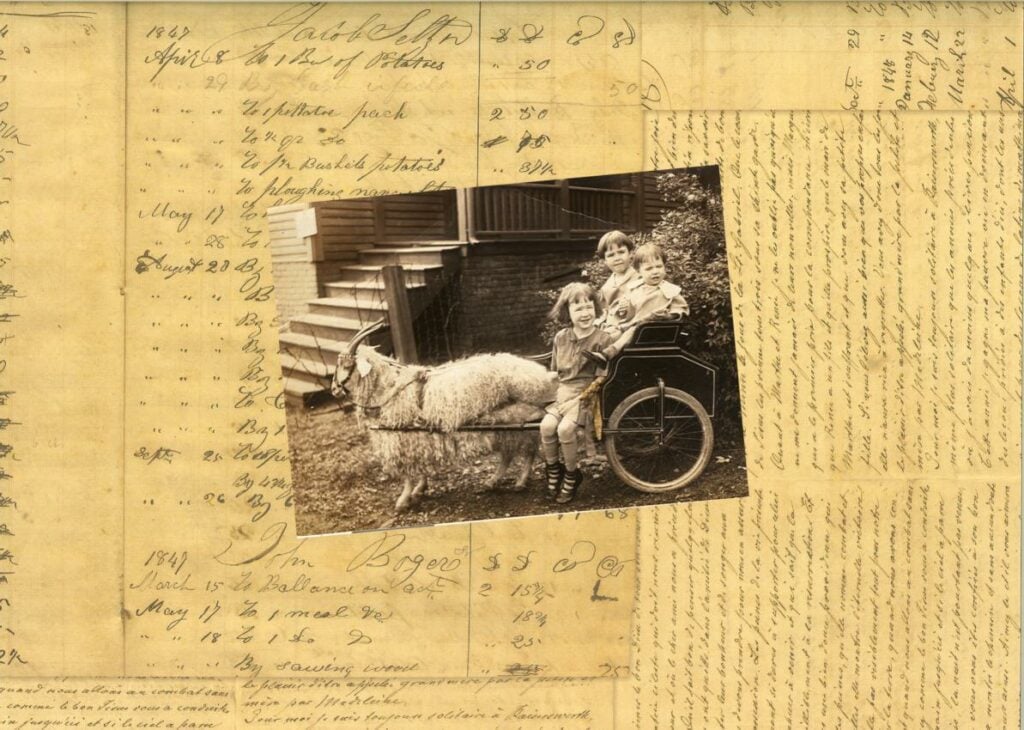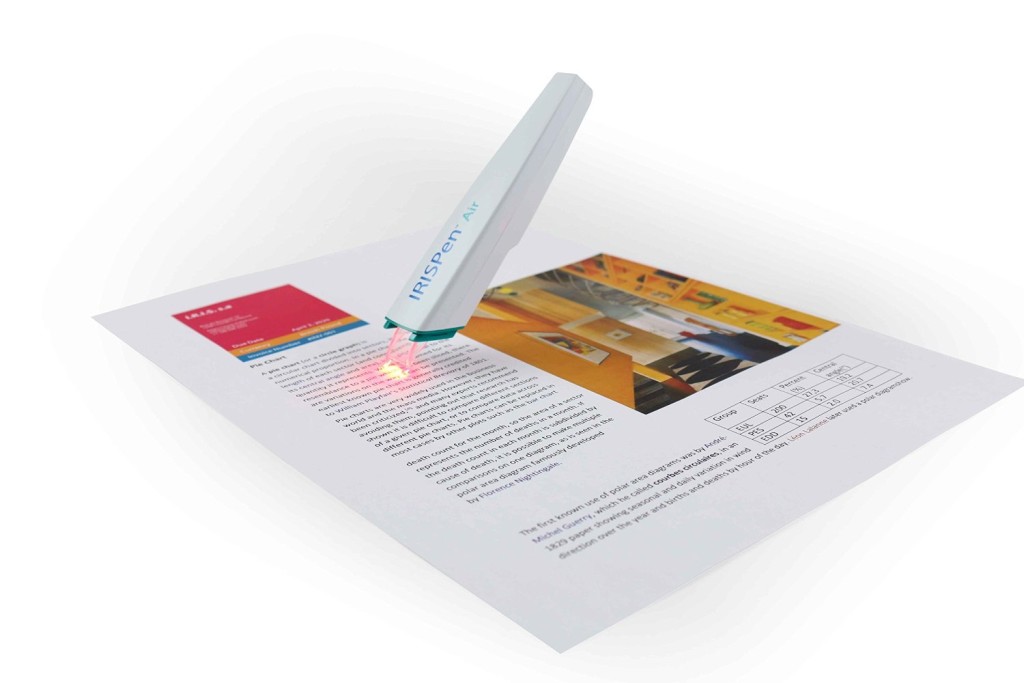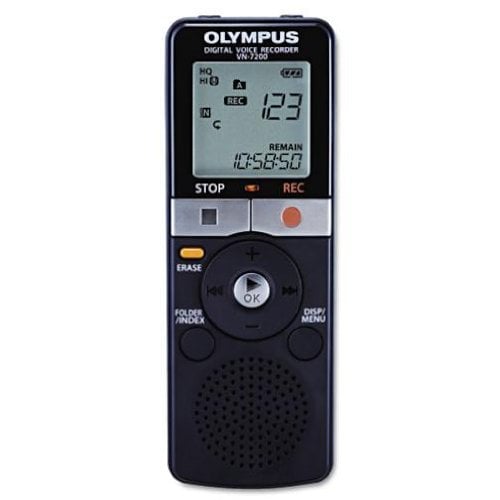Have you ever been to a family gathering where someone unexpectedly pulled out an old family photo album or dusty box of records and you found yourself completely unprepared to record the treasures?
How about a trip to a library or research center where you found way more great material than you expected, but could do little more than snap some photos and make use of the photocopier (at 10 cents a sheet).
Yes? Us too. Somehow, ending up with a bunch of semi-blurry images we took on our cell phone and some scribbled notes just doesn’t feel like a win when we could have recorded so much more.
Don’t get us wrong, photos of documents and images can be a great solution in a pinch, and there are apps to help with this, but since it’s hard to get the right light and stabilization for a truly clear capture it’s not usually ideal.
Luckily, it looks like technology is here to save us. We did some digging and found three items that quickly, easily and clearly record records, stories and photos on the go.
Boy, now we can’t wait for that next family gathering.
UPDATE: This article was originally written in 2015. Although we updated it in Nov 2017 for your convenience, there are now several great options for scanning and recording right from your phone or tablet that are less expensive than the options seen below and may be a better solution in many cases. See these articles for more information.
This May be the Fastest Way Ever to Scan Old Family Photos, and it’s Free
Google’s New Free App Could Revolutionize How We Preserve Family Photos and Records
Master Genealogy Organization in an Hour With Evernote (has voice recording option)
Some of the links below are from Amazon.com and we may earn a commission if you choose to make a purchase. This helps us support our work.
1. Portable Scanners
There are many portable scanners on the market and prices vary widely — from just over $50 to more than $200. At first glance, they might seem like the perfect option for genealogists on the go.
But there is a major problem with this type of technology and family history research.
More often than not, old family photos and documents are fragile and/or are already in a photo album or memory book. Pulling them out and running them through a scanner like this one is not going to work out very well, and may even damage just what you’re trying to preserve.
That doesn’t mean they’re not great products, if you’re dealing with loose leaf images and docs in good shape they are the perfect solution, but most of us aren’t. Plus, they pretty much rule out scanning book or newspaper pages.
So what’s the alternative? Handheld mobile document scanners!
These awesome little inventions, like the one you see below, are held in your hand and run over the document or photo. They never touch it — meaning you can scan fragile photos, certificates, book pages and much more. They are wireless, battery powered and ultra portable so you can easily throw it in your bag and pull it out when needed. Plus, they scan in high resolution to JPG or PDF, are pretty quick and can take large memory cards (meaning you can store many records or photos at one time).
AND the one above includes OCR conversion software which will convert printed text into typed, searchable text. Basically, it indexes for you. Of course, it’s not perfect, no OCR is — and it won’t turn handwritten words into text — but it will go a long way to helping you reduce the time needed to type out the text found on genealogy documents.
When you’re home you can easily transfer your documents or photos to your computer or tablet.
Love, love, love.
2. Pen Scanners
This is another very cool idea for genealogy research. Pen scanners like this one allow you to pinpoint text on a document or in a book and turn the printed words into typed text on your computer or laptop. No need to hand type.
While the portable document scanner will also do this for you, the pens are likely to be more accurate and allow you to select only a small portion of text to copy (such as an excerpt from a book or a specific newspaper article).
Some of these pens work via bluetooth and you’ll need to have a bluetooth compatible device nearby to pick up the text. Others need to be plugged into a USB. Many newer laptops and tablets have this capability and are portable enough to bring along with you if you’re scanning in the field.
Of course, this will not help you store photos, but if you plan to visit a research center, or have a stack of documents that need transcribing, this could be a very powerful addition to your genealogy toolkit. See options on Amazon here.
3. Digital Voice Recorders
Sharing family stories? Listening to Aunt Suzy tell you about all those pictures in the family photo album you’re going through? Interviewing Great Uncle Ed?
Digital voice recorder technology has been around for a long time and yet very few of us have one of them handy for important conversations. Sure, we think we’ll remember everything later — but the truth is we won’t and we can’t turn back time for a second shot at interviewing a family member. The best solution is to record the conversation. You can keep it in your files and transcribe important parts to add to your records.
The prices on voice recorders has gone way down in recent years and there are many excellent options available. Olympus offers a great, heavy duty version with lots of options that is available for less than $30. Many other options can be found here.
Image: Playingwithbrushes on Flickr
Disclosure: Family History Daily receives a small amount of compensation if you choose to purchase products via some of the links found on this page. This helps us support the site and keep it running at no extra cost to you. However, all of our opinions here are our own. We only recommend products we would use ourselves.




Sharon, a year later almost, do you still feel the same way? Would you mind sharing what products you do use with me? Thanks
On the scanners, I have used several, the one that was the easiest was a portable little scanner for photos. It cut heads off and al the photos have little grey lines through them, so sent it back. The going price was about 90.00. So has anyone had any experience with the hand held scanners? What is your opinion about them. Do you personally like one better than another. In this usage, I think spending a little more money is workable if you get a good scan, one with out lines and scans the whole document/photo.
What app do you use, that you mentioned above, that helps w/transcribing a dicument image?
Thanks! ????
I have had the same experience when interviewing people. They do not want to be recorded, nor do they want to have their names quoted. So I have to be inventive and put the history down in their story as told to me by them. My grandmother would stop talking all together when she saw me writing anything down, same with my Mother. She hates to have her picture taken, but we do have some nice ones of her in spite of her unwilling to co-operate.
We have had relatives that would throw out items rather than pass them on as they thought that the items were of no interest to others. Such a shame to loose these historical treasures.
Debra Peters…just to say thank you for you answer.
I have a hand scanner that works amazingly well, and can scan in B&W or in color. Using a clear cover over a fragile piece helps a lot. I’ve used a digital camera and a cellphone camera as well. I also have an audio recording app, and document processing apps, in my cellphone. I can create a text document or a pdf or an image, whatever works best for the piece. These technologies are excellent. Sometimes, I am in awe of how far the technology has come in the last 30 years. I also use an app that helps me with transcribing a document image, like a parish register or 19th century record. There are 2 windows, one for the image, one for entering the transcription. This makes accuracy so much easier to attain! Going to viisit a relative is a treat. I take my gadgets and we get the job done easily and efficiently. The relative doesn’t have to worry for a second that their precious memorabilia will be out of their sight or suffer any damage!
The box stores for construction have a 8 X 10 clear acrylic sheet that works well when using a handheld scanner on a fragile document.
Most places I have gone to research, especially courthouses, don’t allow scanners or cameras. The older generation that I have tried to record, such as my grandmother and mother, refuse to be recorded. I’ve tried to be sneaky but they usually see me get out the phone or recorder and clam up. One challenge I have with my mother is she doesn’t want to be quoted in my research for any stories, etc. That gets rid of any usefulness for future generations. They won’t know if the stories are passed down, told from a child’s viewpoint or an adults. Was if from someone who was there or just passing in on.